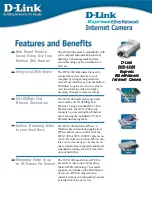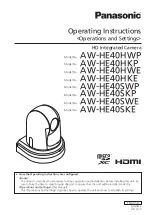
Unicast
If lots of receivers (users) want to receive video streams from the Predator, each receiver will have a
separate video stream. This would increase the network bandwidth used. E.g. five users would require five
video streams, that typically will require five times the bandwidth.
Multicast
If the receivers of the video streams are suitable for using 'multicast' and the video streams will all have the
same format, then it may be possible to use 'multicast'. In this mode, the CODEC in the Predator chooses a
'new UDP address' (Typically an address which is outside the normal range of addresses for the network to
which the Predator is connected) and sends a video stream to the 'new UDP address'. Multiple receivers can
then access this single video stream. Consequently the bandwidth that is required by the Predator is typically
reduced to the single video stream.
When using 'multicast' all intermediate network-switches and routers must be set to allow the stream from the
'new UDP address' to be routed correctly.
Configuration
Use the below settings to set how the video is sent, adjusting the settings can help to eliminate any 'stutter' or
'pulsing' on the video image.
Stream 1
IP Ratio/GOP value
25 (default)
(Type in a number)
RTP Block Size
1448 (default)
I Frame Size
55 (default)
Unicast Stream Limit
•
Used to set the unicast stream limit.
Streamer Version
E.g. 1 'i-frame' every 25th image.
Range 0 (Ethernet MTU), 1440 to 65500
Range Oto 99
(average frame size x value/10 = i frame size)
•
Option allows the user to set the video streamer version. Options are original and 2016a.
OK
to program the new settings into the Predator.
Cancel
to
abandon the changes to the advanced video settings.
Default
is
used to factory reset the video stream settings.
Predator Radar Installation Manual_V8_1_28_00
Page 62 of 78
© 360 Vision Technology Ltd
















































